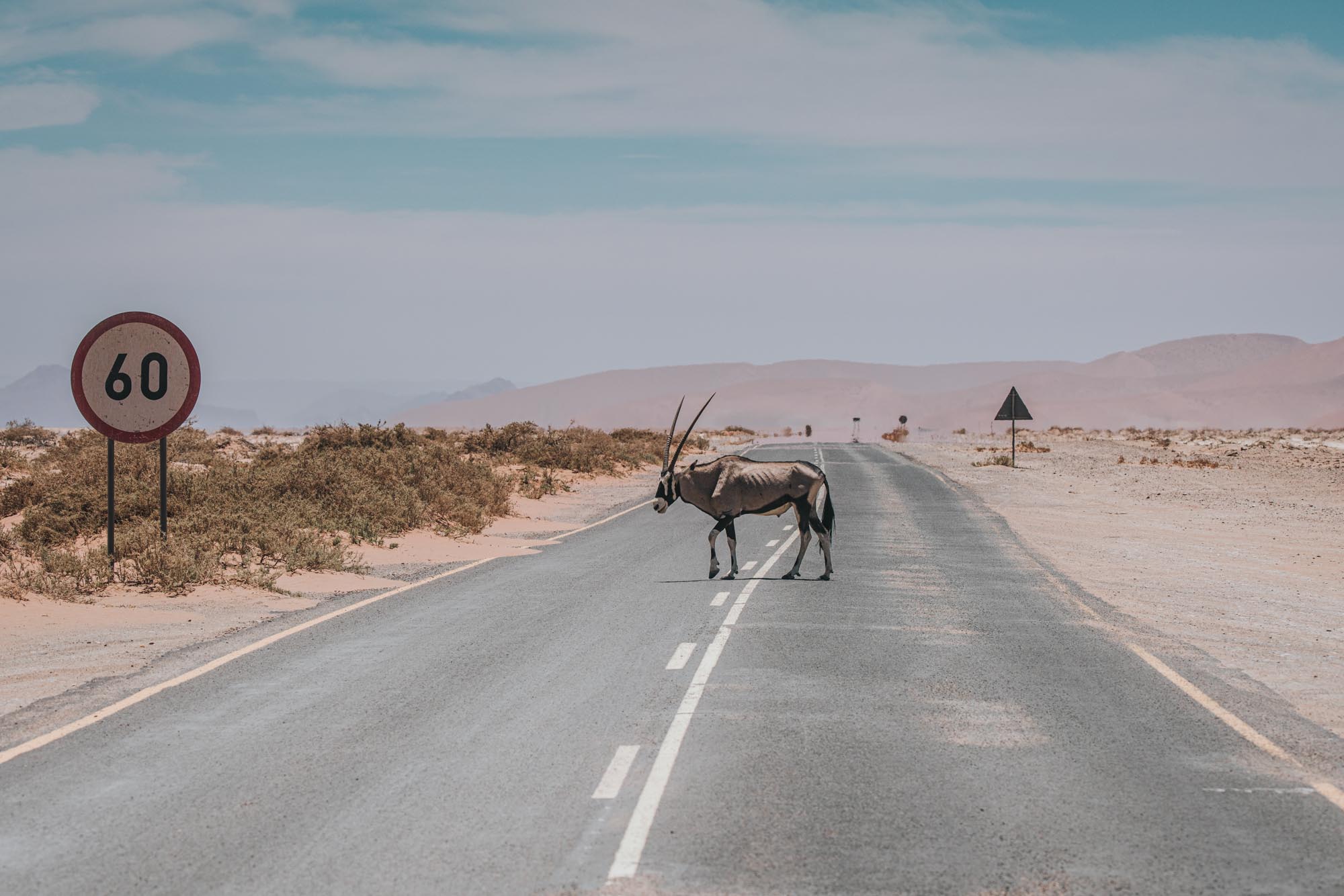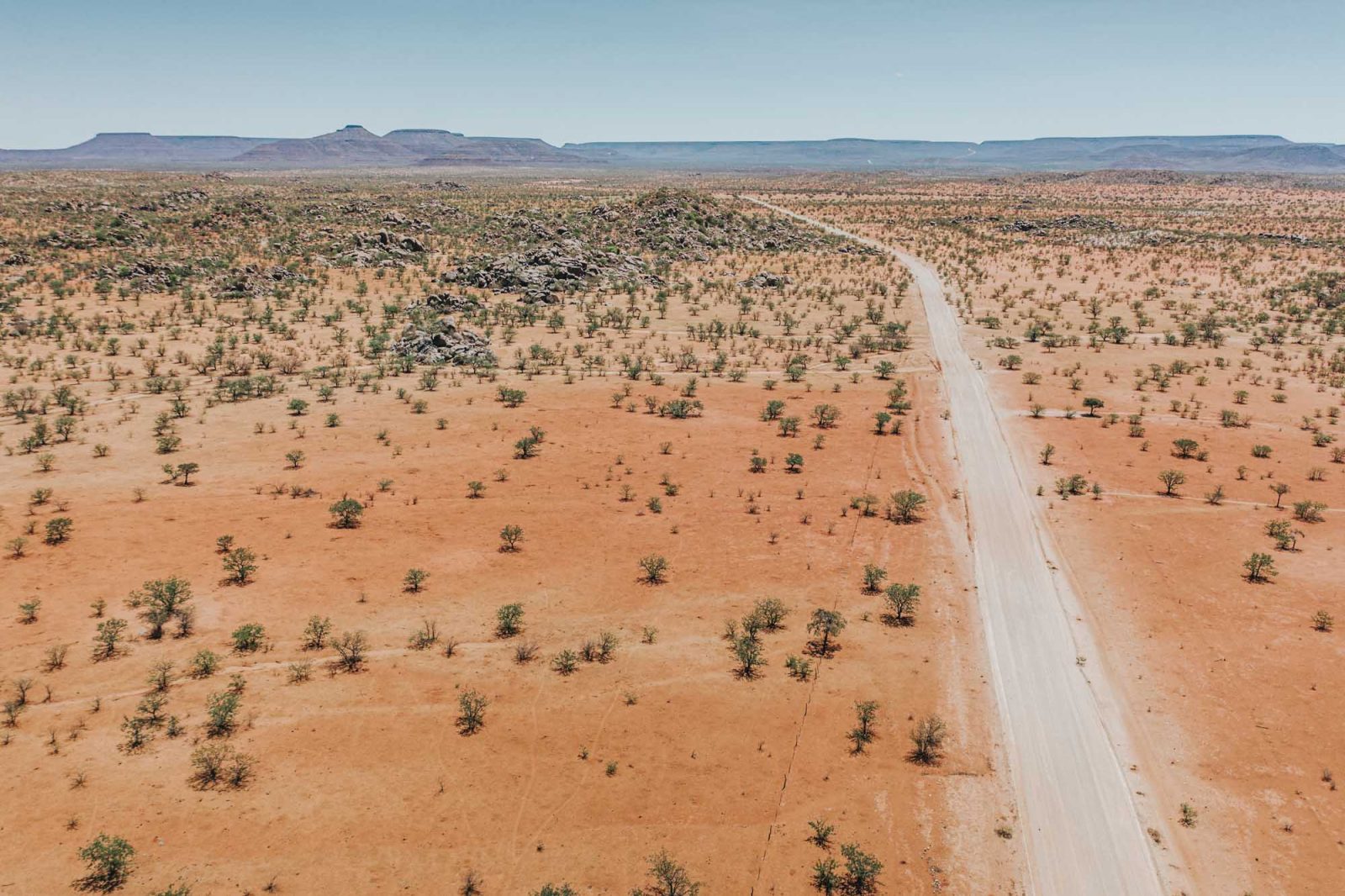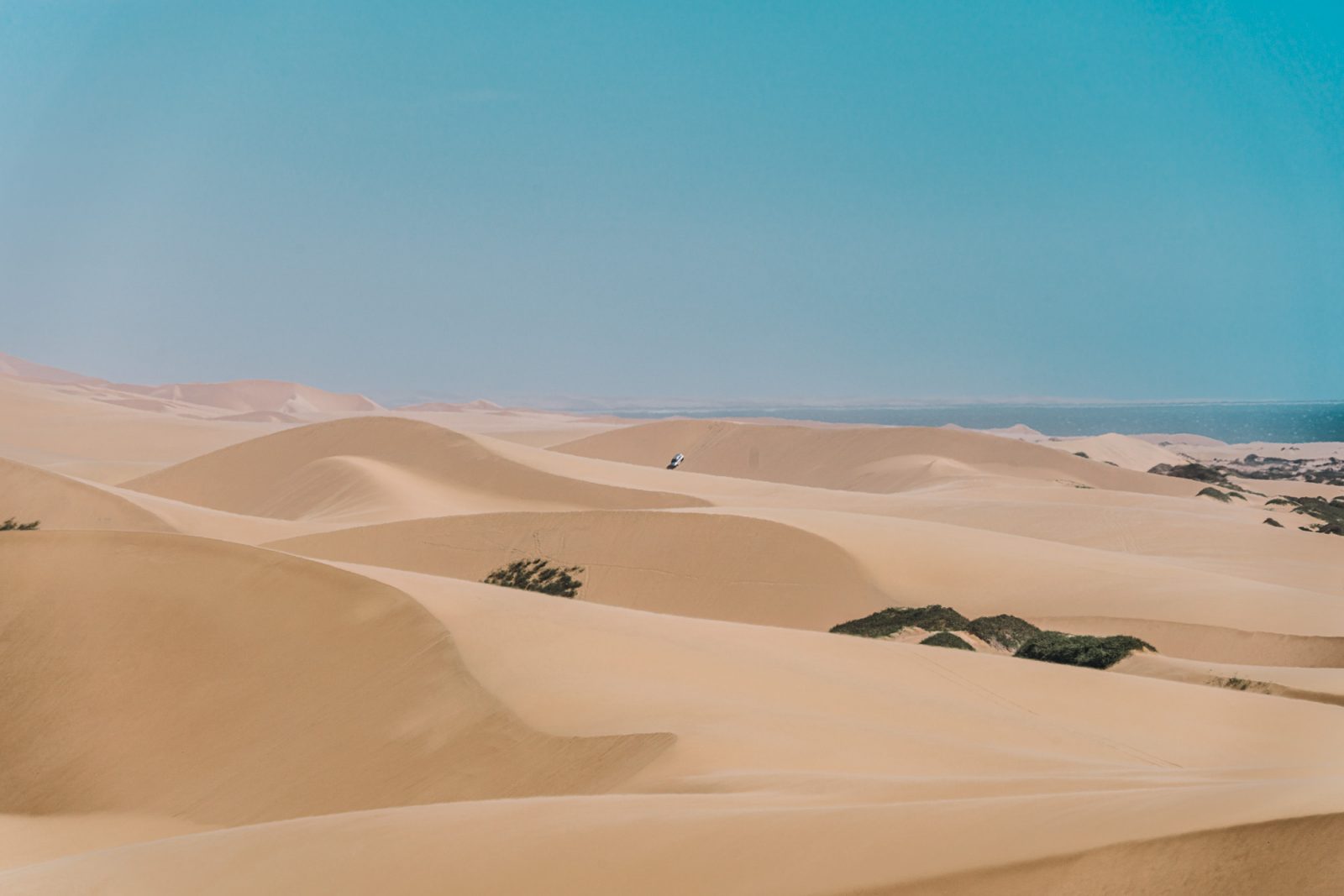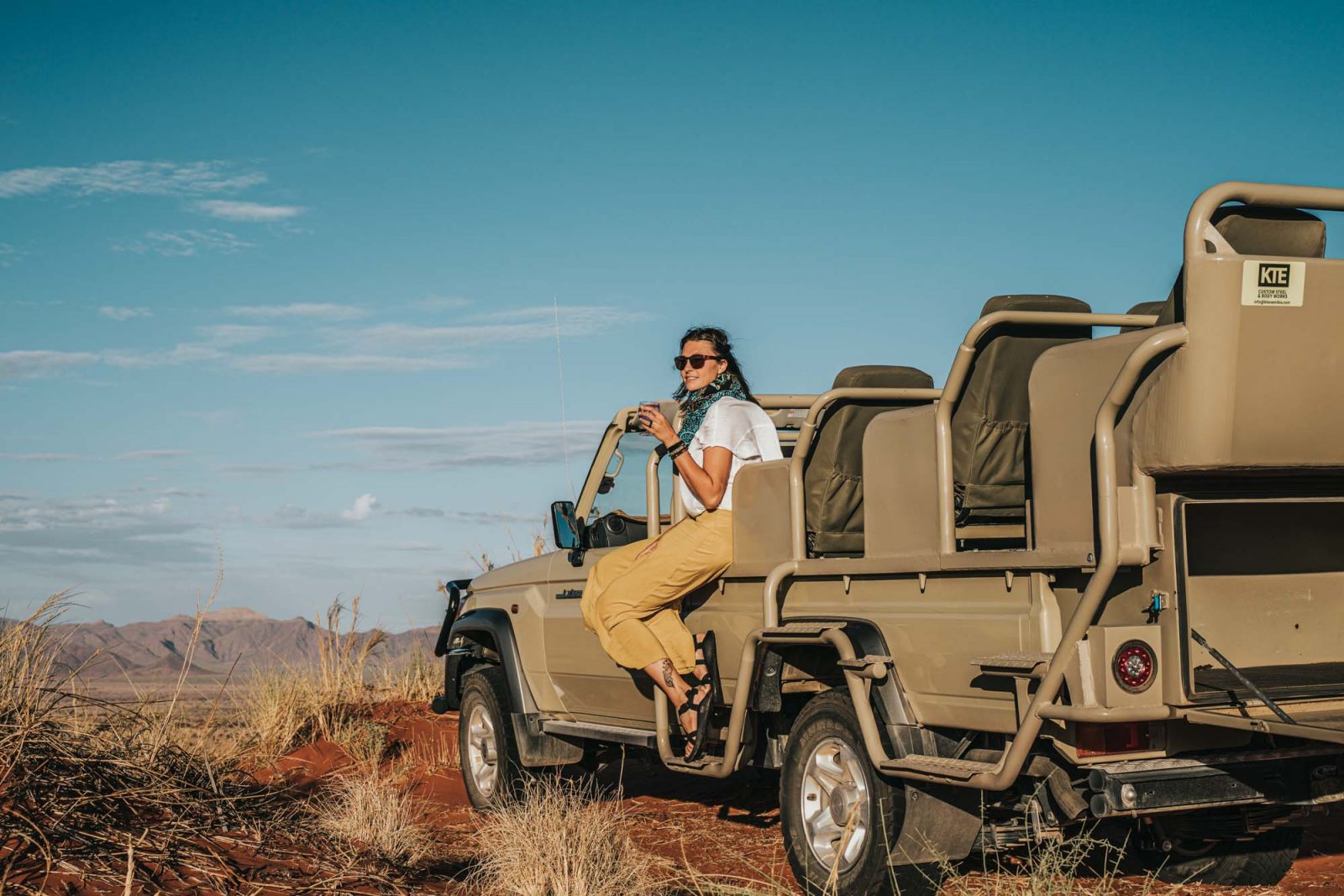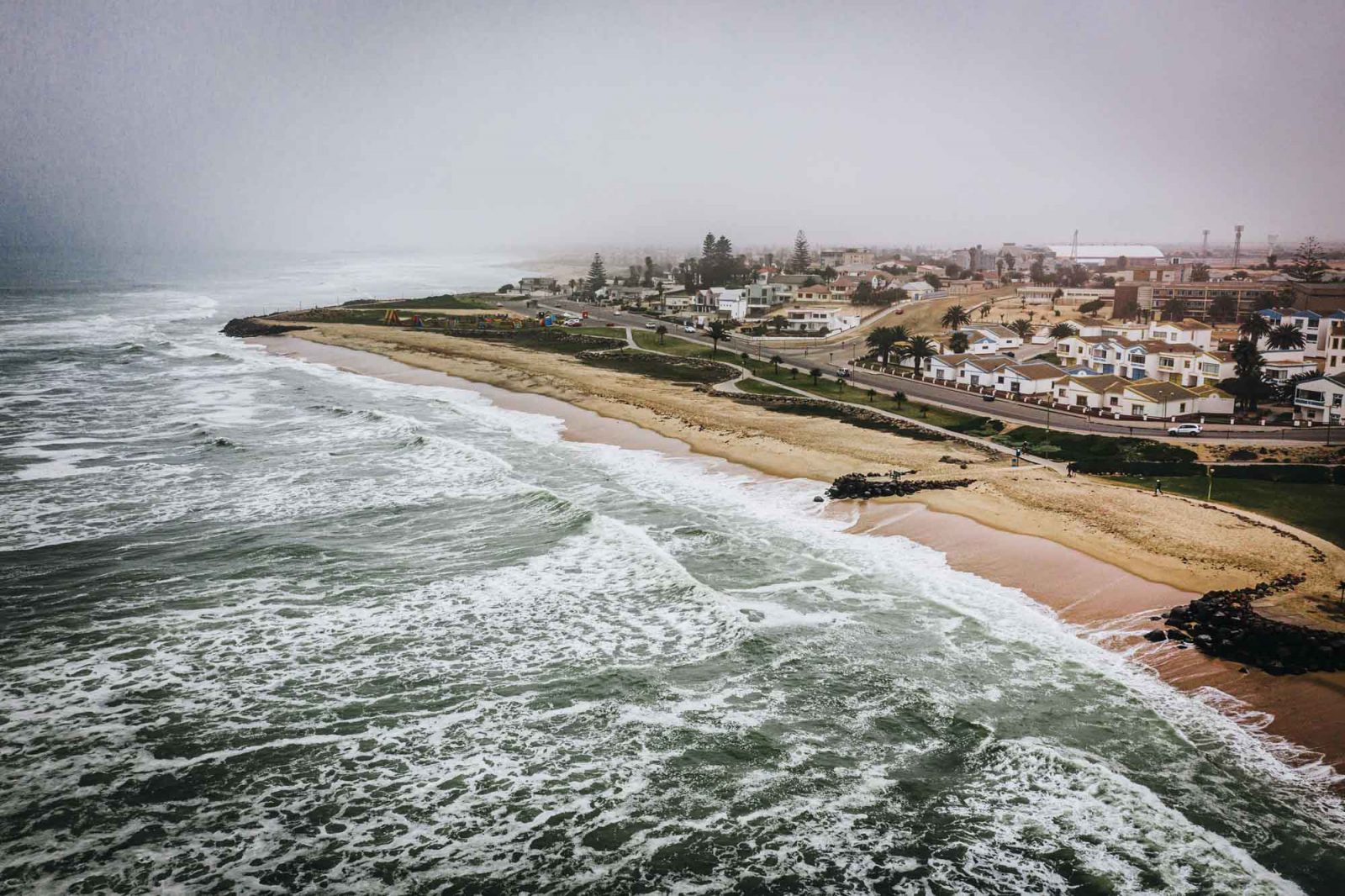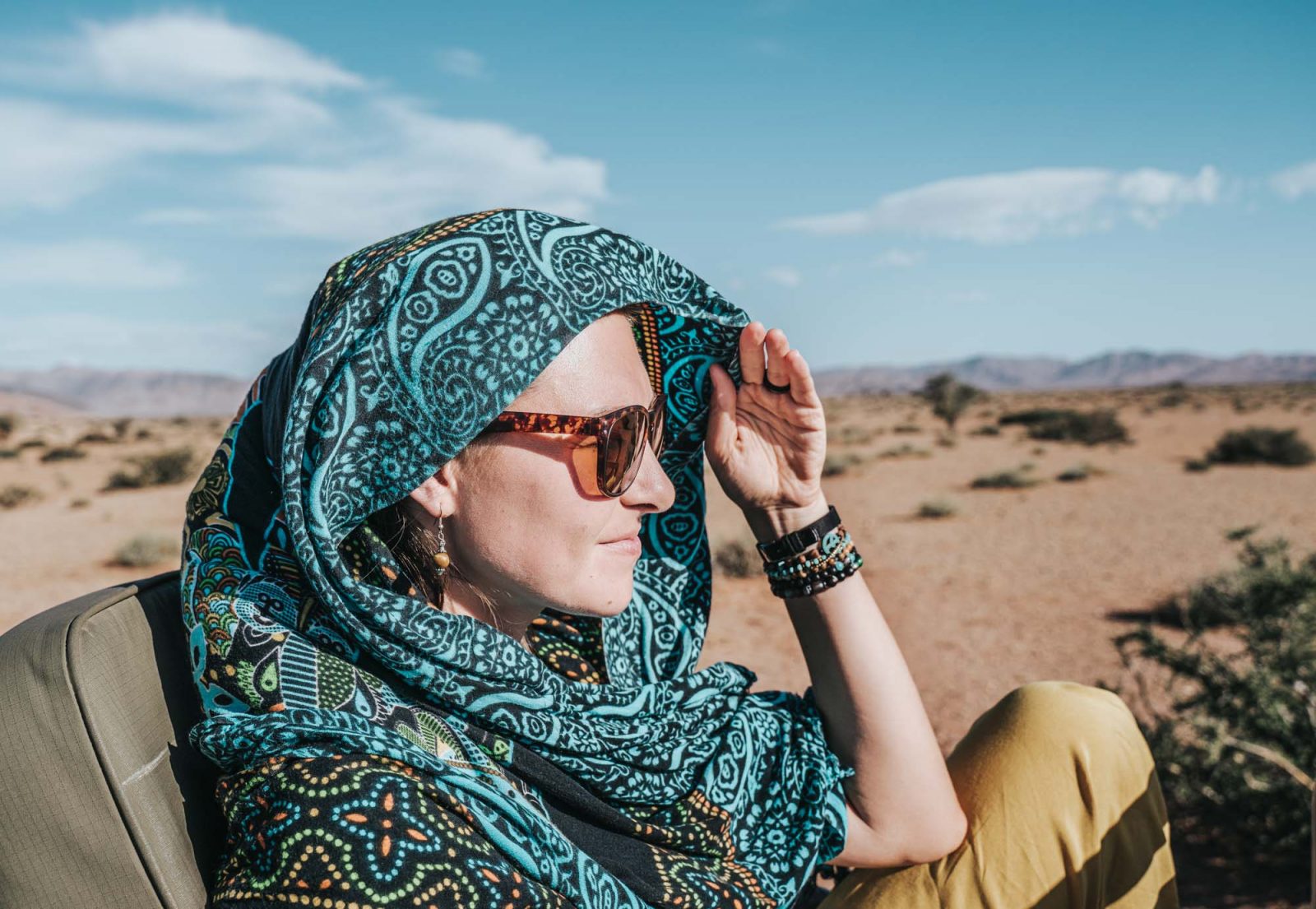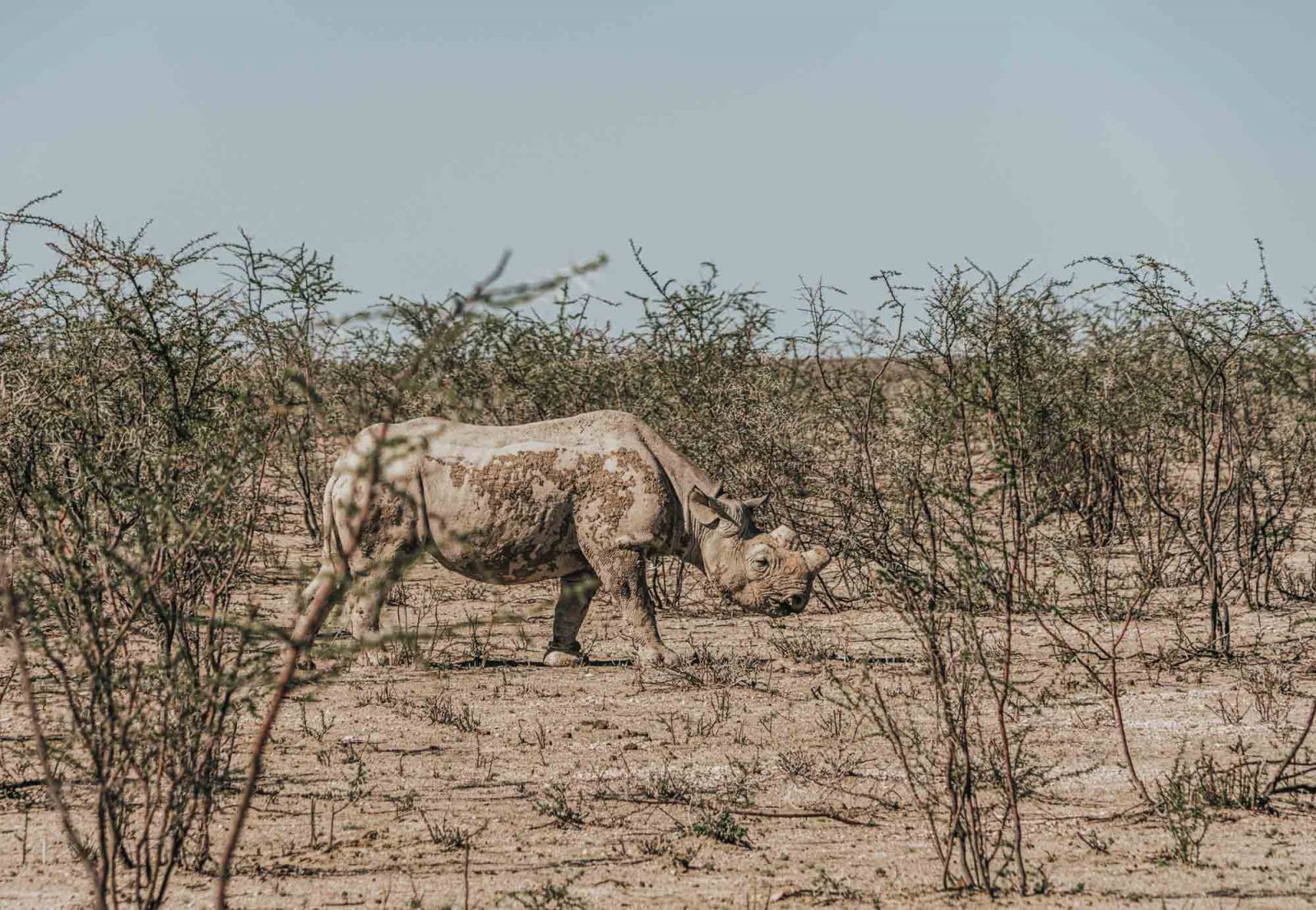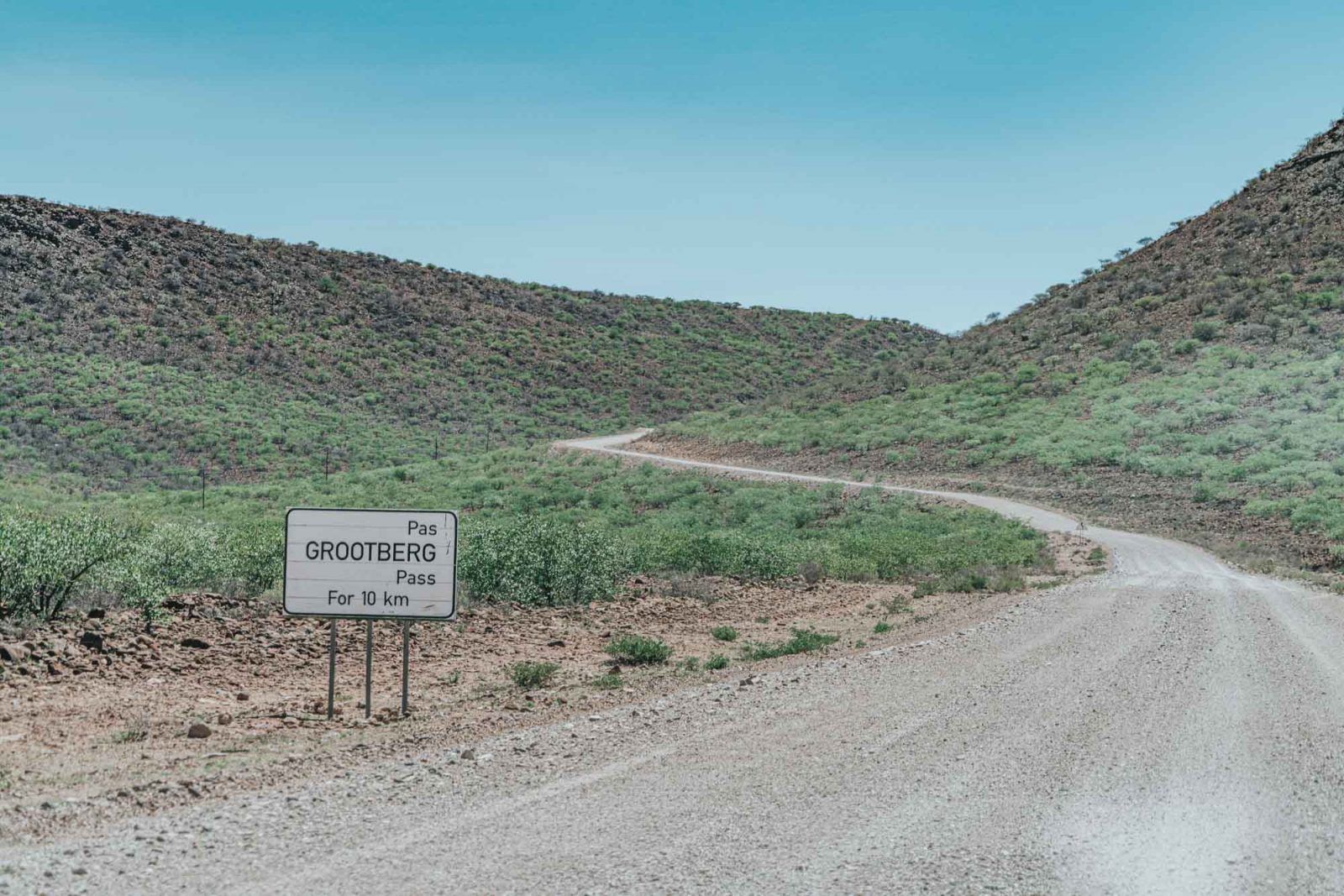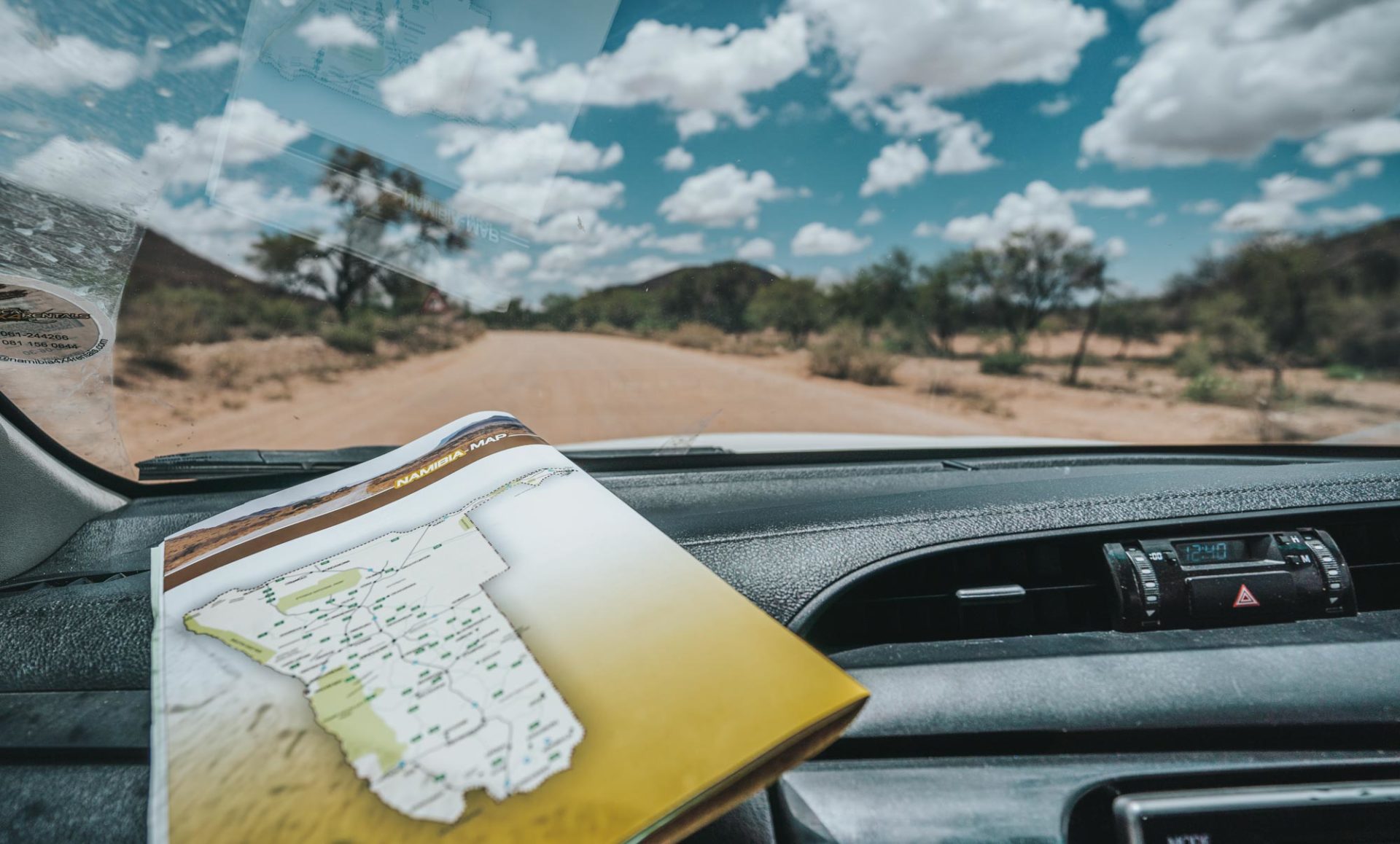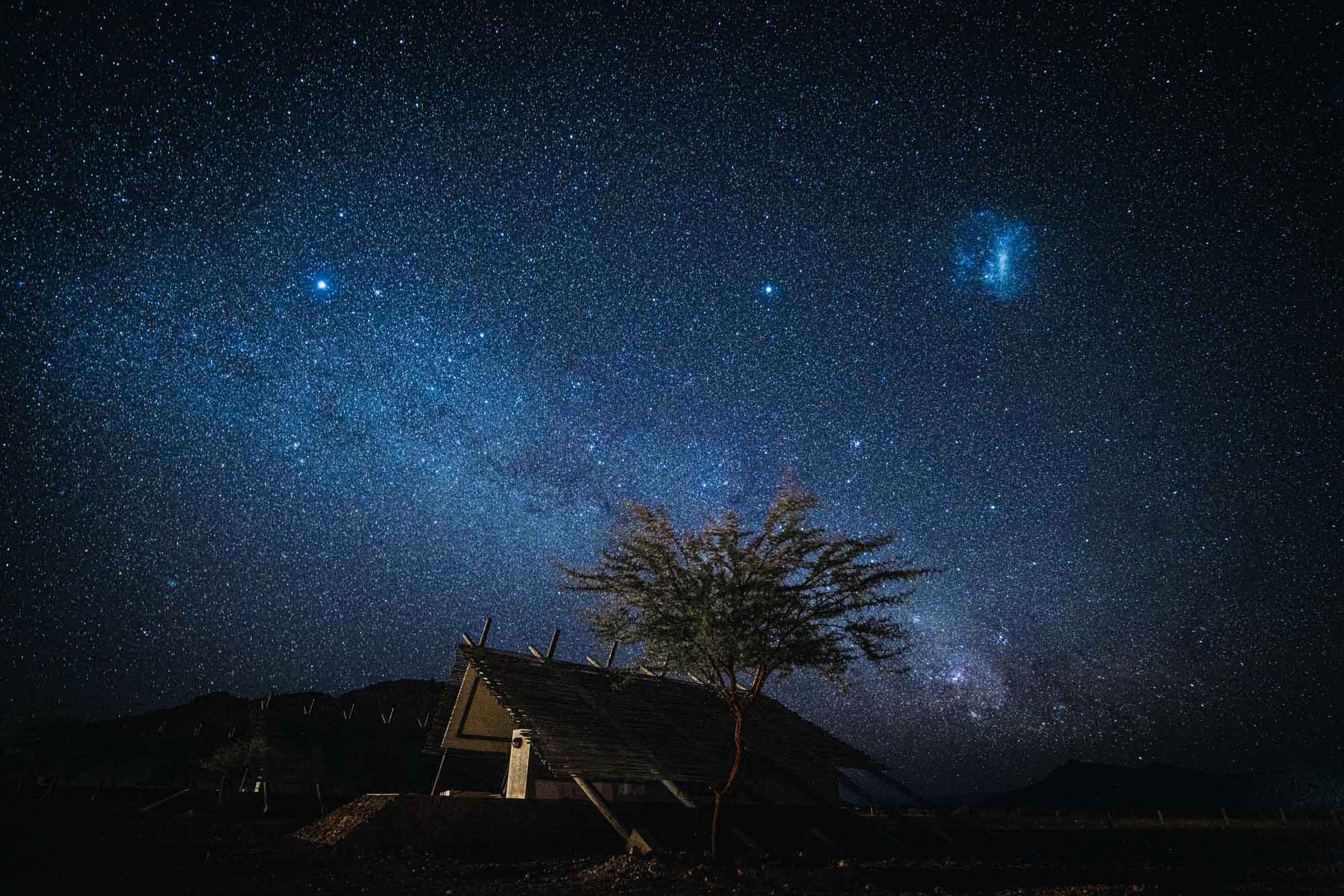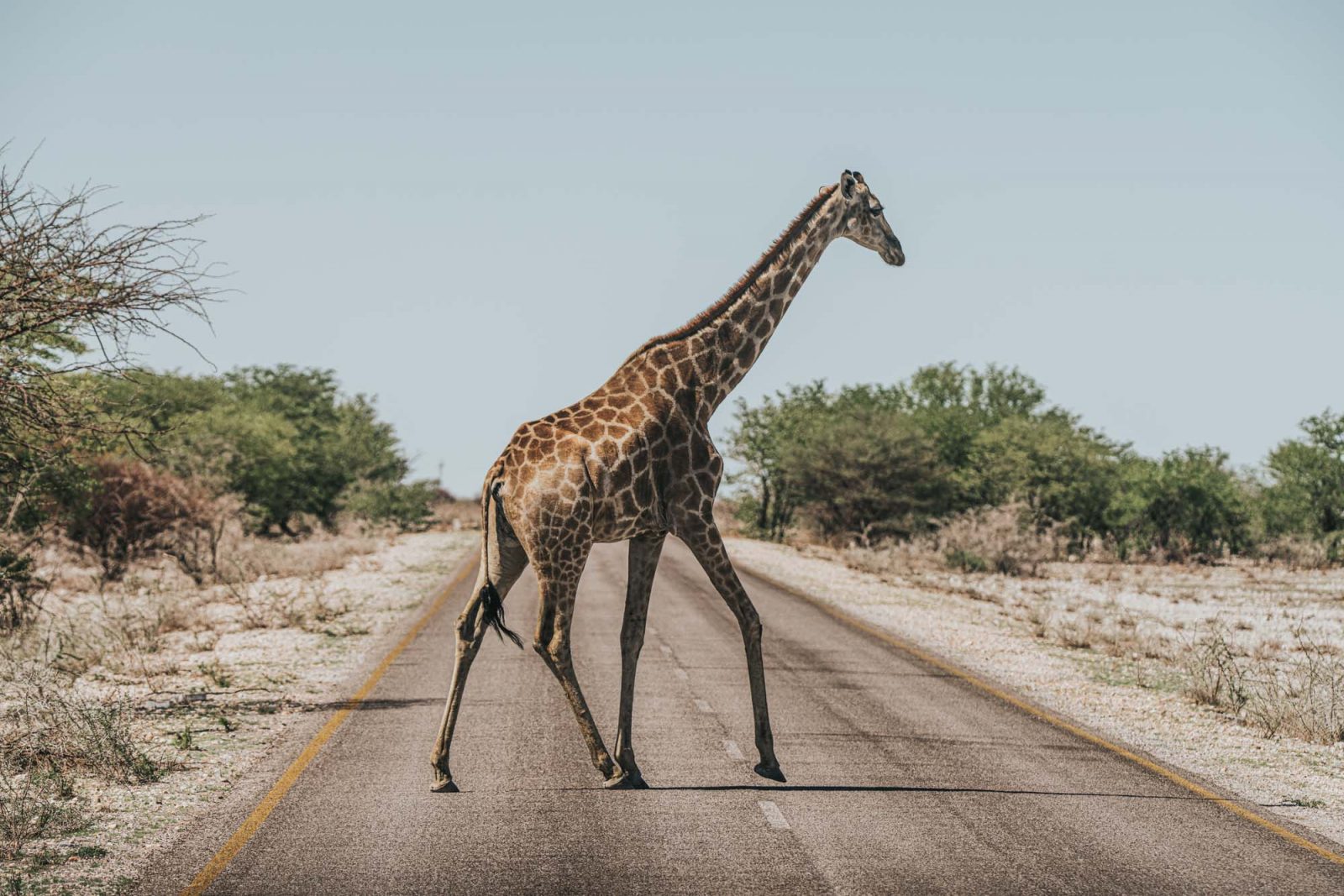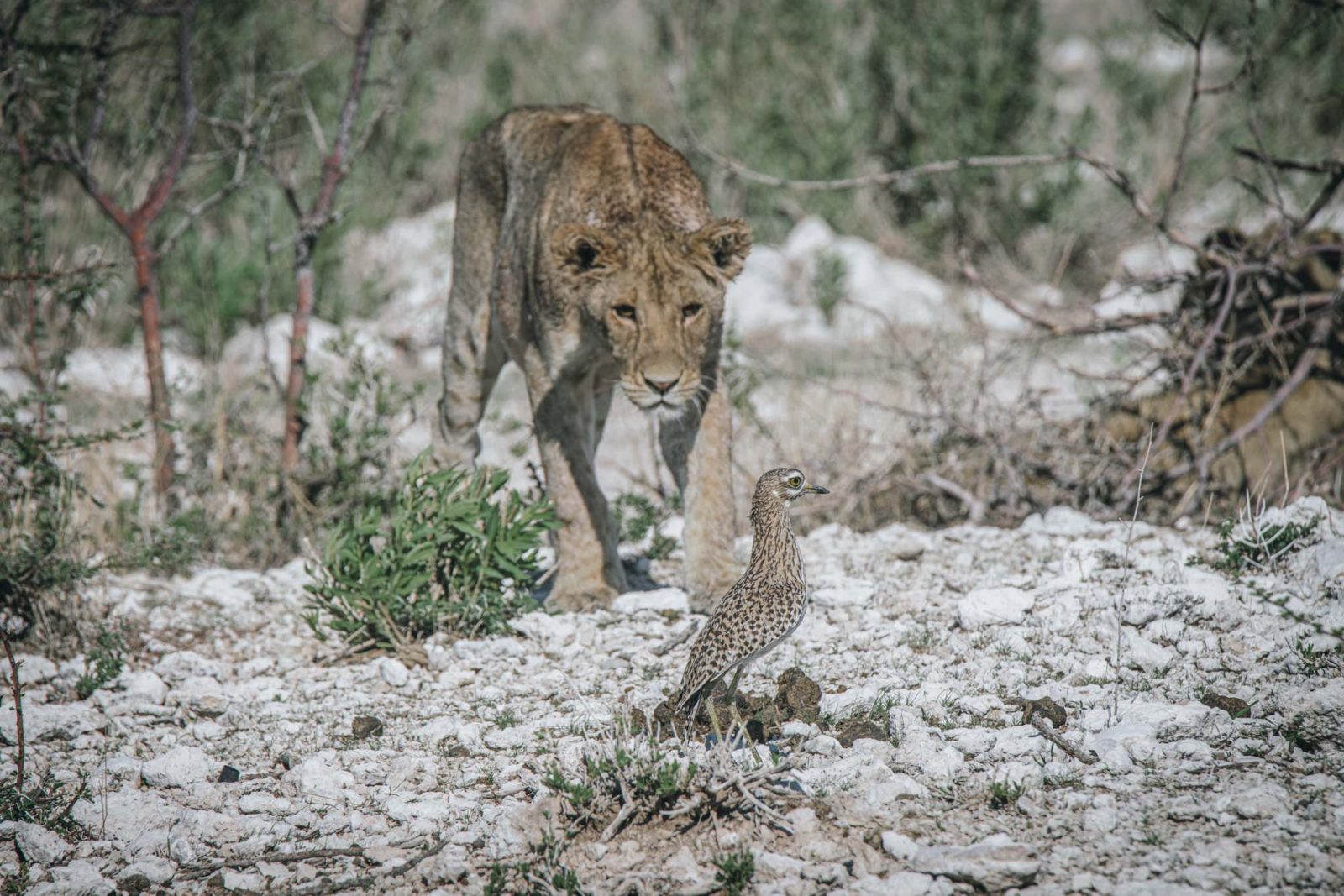Namibia is a country of extreme natural beauty. From the towering red sand dunes of Sossusvlei to the desolate, arid plains of the Namib Desert to the deep valley of Fish River Canyon and floodplains of the Caprivi Strip, the variety and dramatic nature of the landscape is astounding.
*This post may contain affiliate links, as a result, we may receive a small commission (at no extra cost to you) on any bookings/purchases you make through the links in this post. As an Amazon Associate, we earn from qualifying purchases. Read our full disclosure
However, Namibia is not a classically popular African destination and it somehow still sees far fewer visitors than its neighbour, South Africa. Still, traveling to Namibia is incredibly rewarding with awe-inspiring landscapes, abundant wildlife, friendly people and a relatively safe reputation.
If plan traveling to Namibia, here are our top Namibia travel tips you should know before leaving on your trip.
Traveling Soon? Here is a list of our favourite travel providers and accessories to help get you ready for your upcoming trip!
Things to Know Before Traveling to Namibia
Namibia is in Southern Africa
For many people, Namibia lives within the shadow by its neighbor, South Africa. It can be easy for some people to lump Namibia and South Africa into the same basket. But, Namibia is actually quite different and unique.
Namibia is on the South Western Coast of the African continent and is bordered by South Africa, Botswana, Angola and Zambia.
Namibia currency is Namibian Dollar
The currency in Namibia is Namibian Dollar. However, South African Rand is interchangeable and widely accepted. Some ATMs even dispense South African Rand instead of Namibian Dollars, so don’t be alarmed if that happens to you. Namibia is part of the Common Monetary Area with South Africa, Lesotho and Swaziland, making it relatively easy in terms of currency exchange to travel across these countries.
US Dollars are also accepted on occasion, although local currency is best. Credit card facilities are widely available and you should be able to pay most things with your credit cards, although it’s handy to keep some cash on you at all times.
English is widely spoken
Namibians are impressively multilingual. English is a very common language in Namibia and you’ll find that most people speak it fluently. Surprisingly, German is also widely spoken. German colonists claimed Namibia as South West Africa in the 1880s and there is still a strong German influence in the architecture and language.
People also speak a native tongue, as well as even Afrikaans which is derived from colonial Dutch and widely spoken in South Africa.
Many nationalities don’t need a visa to enter Namibia
Foreign nationalities from Australia, New Zealand, UK, US, Canada, Japan and many European countries don’t need a visa for a stay of up to 90 days in Namibia. You can check online whether your nationality requires a visa or not. This makes it especially easy for crossing overland, if you’re exploring more of Southern Africa.
If you’re crossing from South Africa in a vehicle, you’ll need to have a valid passport for the driver, vehicle registration copies, a letter of authority from the rental company and a travel insurance certificate (which you can get at the border itself). Otherwise, it’s quite common for travelers to be crossing in rental cars and is not usually a difficult process.
Tap water is safe to drink
You might be surprised to discover that tap water is actually safe to drink in Namibia. This means you should bring a reusable water bottle so that you don’t have to purchase any single-use plastic bottles in the country. You’ll be able to fill up at your accommodation, including even camping grounds which usually have drinkable tap water available.
If you’re still concerned about the safety of the water, we recommend that you bring along a purifier like Steripen.
But, water scarcity is a serious concern
Water scarcity is a pressing problem in Namibia. The country sees recurrent droughts and rainfall can reduce dramatically by up to 50% between different years. Many of the large urban areas like Windhoek are frequently put under strict water restrictions to save the water reserves the country does have.
As visitors to Namibia, you can help by being conscious of the water restrictions that citizens abide, such as shorter showers and not washing vehicles unless necessary. The tourism industry places extra pressure on resources and it’s important that you select eco-friendly accommodation options and places that have water conservation policies, such as water recycling.
Namibia is pretty safe
“Is Namibia safe?” is one of the most popular questions for traveling to Namibia. It’s actually one of the safest countries in Africa to visit as a tourist. Namibians are friendly people and the level of corruption and crime in Namibia is lower than in many of its neighbouring countries. In saying that, petty theft and muggings do happen occasionally. Usually, this is at night and in the city areas, particularly Windhoek.
You should take normal precautions as you might when traveling to any other country, keep your valuables safe and be wary of getting around the city at night. Taxis are generally safe and are best to take after 9pm in Windhoek.
It’s one of the least populated countries in the world
Namibia has the second-lowest population density in the world, after Mongolia, and with just 2.5 million inhabitants, the vast country can feel quite empty. Traveling to Namibia can be quite isolating for this reason and you might even go an entire day of driving through the desert without seeing another soul.
Most of the population lives in the central and towards the north of the country, with very few majorly populated areas. In a significant difference with many other countries, Namibia’s coastline is even more sparsely populated.
The desolate and perilous coast of Namibia which is dominated by the Skeleton Coast Park and Namib-Naukluft National Park, are characterized by lifeless shipwrecks and vegetation, towering sand dunes and inhospitable terrain. The only major town on the west coast is Swakopmund. Other major towns and urban areas run up the centre of the country along the main road network.
It’s not always hot in Namibia
The climate in Namibia is quite different from what most people expect. Although vast swathes of the country are desert, that doesn’t mean that it’s always hot. The nights can get quite cold, especially in the winter and drier months from May until October.
In the hotter, summer months from November until April, the temperatures can be scorching, especially in the desert. This time also brings the summer rains which turns much of the country slightly more green and lush and even brings flooding to some northern parts. This is also when malaria risks are higher, especially around the north of Namibia and into the Caprivi Strip.
Still, the elements in Namibia can be tough at any time of the year. The dramatic changes in temperature and the prevalent sand and dust, makes it particularly tough on your electronics like your camera and laptop. So it’s best to try and keep them protected as much as possible to reduce any build up of dust and grain – this was a bit of a struggle for us and is a common issue for keen photographers in Namibia.
The best time to visit Namibia is in the dry season
The best time to go to Namibia is in the dry winter months from June until August, although the weather is pleasant from May to October. However, this also means that there are far more visitors and crowds at this time, especially in National Parks. With the higher demand, decent accommodation can also be difficult to find.
However, this is undoubtedly the best time to travel to Namibia for wildlife spotting and game drives. Animals in Namibia tend to congregate around water holes and it can be much easier to guarantee to spot them in these drier months.
Namibia is vast and requires some time to explore
Namibia might not seem like a large country, but it is vast and distances are long. At first glance, you might consider that a week is long enough to cover the main Namibia tourist places. However, with just a week, you would spend much of your time on the road or having to fly from point to point. You really need at least two weeks to see the best of Namibia but it is even better to have up to a month.
There are very few domestic flights compared to other countries, with such a small population the demand for internal travel is low. Many of the best places to visit in Namibia are also quite remote and attractions are far apart, making for long days of driving. When planning your Namibia road trip, ensure you consider the driving time rather than the distance on a map, as the rural gravel roads can take much longer than planned.
Hiring a car is the best way to get around
The best way to get around Namibia’s long distances and remote roads is by self-driving. Hiring a car is certainly the best option if you have the time and want to get to as many places as possible.
Namibia is one of the best places for a road trip. The roads are generally quiet and open with little traffic in much of the country. However, you have to be aware that there are many gravel roads and soft sand. This can pose challenges if you have never driven in such conditions before. Still, Namibia self-drive tours are very common and many travelers opt to rent a car.
READ MORE: Essential Things You Need To Know About Renting A Car In Namibia
Car rental is not that cheap in Namibia. The average price for a 4×4 in Namibia is around $100 per day. You can save a lot by renting a 2WD, and even more if you are looking for a regular compact car vs one with a higher clearance.
If renting a car seems a little stressful for your Namibia vacation then you can always opt for a group tour with a company like G Adventures. This way all the logistics and transport can be taken care of. You can be assured that you’re in good hands with an ethical and pro tour operator like G Adventures. During our time in Namibia, we frequently crossed paths with G Adventures vehicles, stopping at the same sites and visiting the same attractions. Their itineraries are well designed.
Be prepared and self-sufficient
The long stretches of road across vast landscapes without so much of a gas station in sight means you really need to be well prepared for any situation. We don’t mean to sound alarmist. However, it is a good idea to ensure you always have plenty of drinking water. Also, some food and snacks and at least half a tank of fuel at all times. We kept a gallon of drinking water and snacks in our car at all times. It gives us that peace of mind when we were traveling off the beaten path.
If you’re self-driving in Namibia, it’s worth planning your days ahead. This is to ensure you know where gas stations are located and the distances you’ll be driving between stops. Have an offline map downloaded or a good old paper map, with your route and stops worked out.
It also pays to carry a spare tyre or two and know how to change one! One of the most common issues self driving in Namibia are tyre punctures. Especially in some of the more remote and rough Namibia road networks. The last thing you want is to be stuck on the side of the road in the middle of nowhere.
We were lucky and never ran into any trouble on our Namibia self-drive. But, we stopped to help out a few other fellow travelers with tyre changes along the way. It does happen more frequently than you might expect!
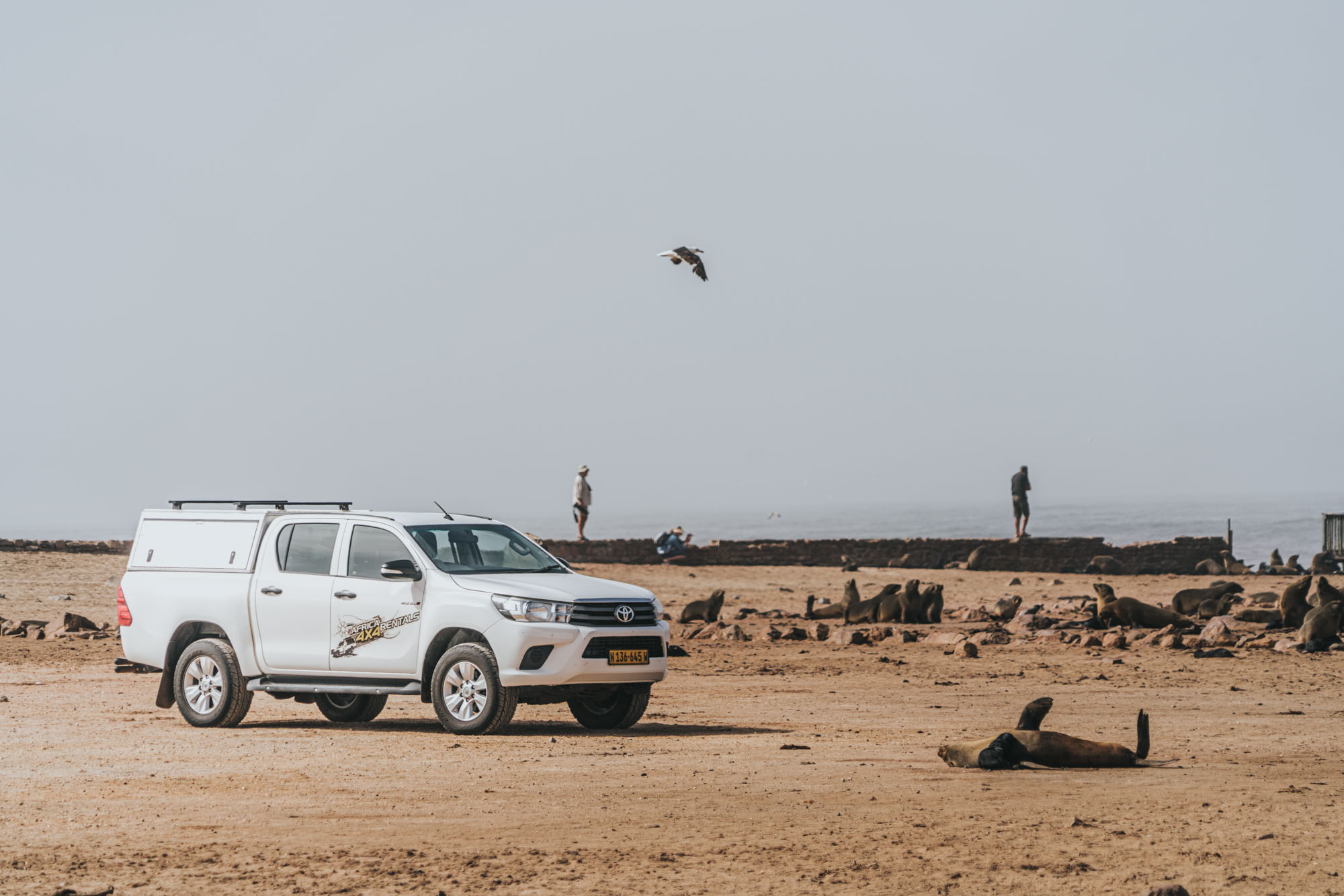
Staying connected is difficult
Sim cards are available for foreigners and it’s not a difficult process to get one. There are two network providers: MTC and TN Mobile. Although, MTC seems to have better coverage. You can purchase a SIM card from either of these providers at the airport. Or, at their stores in any town.
MTC has packages that they call Aweh Gig, which for 35 Namibian Dollars gives you 100 minutes of local calls, 700 SMS and 1GB of data for 7 days. You can always add more data if you need it.
However, coverage is severely limited and you won’t get much signal past major highways and cities. Wi-Fi and the internet in hotels and lodges are also generally pretty weak.
Traveling to Namibia really is perfect for digital detox!
Seeing Namibia on a budget is tough
Namibia is not the cheapest country for traveling in Southern Africa. If you’re backpacking in Namibia on a budget, it will be tough to keep your overall costs low.
In terms of accommodation, especially outside of Windhoek, you mostly have the options of camping or lux lodges. It’s not much in between. Even camping and self-catering can be quite expensive. Because, this requires car rental which can be up to $100/day alone. Also, the costs of fuel which can be around $200 for a 7-day road trip. However, self-catering will allow you to save money on other things like food. Food is quite affordable if you shop at local markets.
When traveling to Namibia, the tour packages are also generally expensive. Activity costs are high with game drives and Namibia desert tours especially pricey. Those traveling on a budget are best off hiring a basic 2WD car. Don’t forget some camping equipment and planning to stay at budget campsites along the way.

Namibia has a lot of wildlife
After reading so much about Namibia’s vast desolate landscapes, you might be surprised to learn that there are actually an abundance of wildlife there too.
Etosha National Park is the big wildlife drawcard in Namibia and it’s one of the best safari destinations in Africa. The 22 750 square kilometre park is home to four out of the big five, elephants, lions, leopards and rhinos. It’s particularly known to be one of the best places to see the rare black rhino, black-faced impala and Damara dik-dik. The park is one of the top places to go in Namibia for most travelers.
With the more harsh climate in the country, you can also see desert animals like oryx, meerkat and bat-eared foxes. It makes Namibia safari tour quite unique.
The far north-eastern part of Namibia, known as the Caprivi Strip, offers a different experience all together. It has heavy rainfall over the summer. Making it a much more wet area and home to a large population of hippos and crocodiles. You can even spot buffalo there, rounding out the big five game animals of Namibia.
Along Namibia’s treacherous coastline, you can find unique marine wildlife. The Skeleton Coast Park is home to 100,000 Cape Fur Seals, one of the largest breeding colonies of this seal in the world. In November and December, it’s even possible to see their tiny pups ashore.
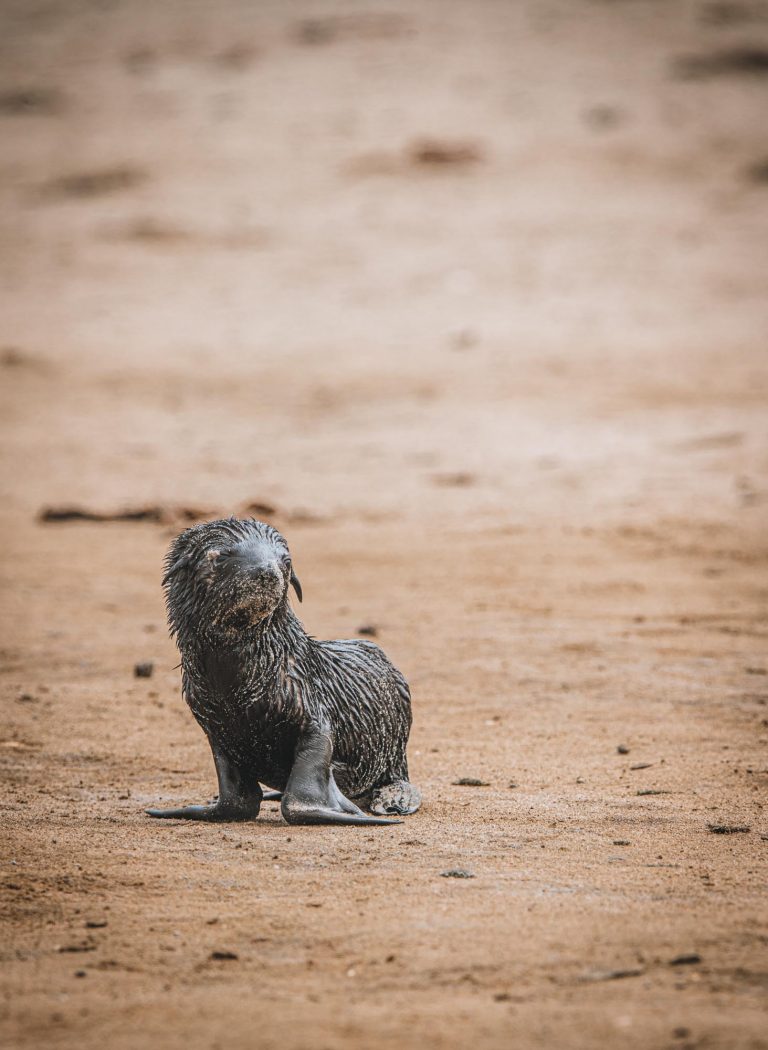

Further south around Walvis Bay you can hit the water on a boat in search of whales and dolphins. Humpback whales as well as southern right whales and Benguela dolphins can be found off the coast in Walvis Bay in the winter months from June to November.
Even further south in the Namib Desert, you can find a number of game animals, similar to Etosha National Park. You can also spot up to 150 wild horses that roam freely in the desert and are considered the world’s only desert-dwelling wild horses.
But, it’s not the best safari destination
Still, Namibia is not the best safari destination in Africa. When compared to places like the Maasai Mara and Serengeti in East Africa and even in the Greater Kruger National Park in neighbouring South Africa, Namibia doesn’t quite have the density of wildlife that makes for easy animal viewing. The best chance of spotting wildlife is substantial to the dry season in winter when animals congregate at water holes.
Namibia’s harsh environment and landscape also mean getting off-road is difficult. One of the main joys of safari tours is getting closer to the action by navigating the scrubland. However, this is quite rare in Namibia.
Still, traveling to Namibia can still offer a great opportunity to catch a glimpse of some of Africa’s best wildlife. Safari is still one of the best activities in Namibia. It’s also possible to do a Namibia self-drive safari for little cost, with lower park fees than in South Africa which is great for budget travelers.
Namibia is home to many tribes – even today
Namibia is home to many different tribes that represent the unique culture in Namibia. The most famous of these tribes is the San and Himba. The San or the “bushmen” are one of the oldest inhabitants of southern Africa. They have traditionally lived in the Kalahari Desert and in eastern Namibia.
The Himba are characterized by their ochre painted faces and long braided hair. They are descendants of the older Herero tribe. Today, they live mostly in the northern part of Namibia in the Kunene region, which also goes across into Angola. We came across a few Himba people near Etosha, but it’s not typically where this tribe is known to reside.
When traveling to Namibia, it’s common for people to want to visit these tribes to try and understand the semi-nomadic lifestyle and unique culture of these ancient civilizations. However, the integration of the tourism industry into the lives of these remote tribes has caused some issues with so-called human safaris. It was for this reason that we did not seek out a tribe visit during our trip. We are unable to recommend one to others.
Namibia tour operators tend to take tourists to villages and treat the people and their lifestyle as a kind of tourist attraction that forms a part of a package safari. If visiting the Himba or San people or any other tribe in Namibia is your interest, it’s important to respect their culture.
Do not take photos of them without asking first. Rather, engage in some sort of conversation with them. It’s also best to find an ethical tour operator who also supports the community in some way.
Traveling to Namibia is definitely worth it
Namibia is a very beautiful country with dramatic and extreme landscapes. It offers a rugged and exciting adventure with a desolate coastline and the world’s oldest desert. Also, Namibia have deep canyons, abundant wildlife and a rich colonial and indigenous history. It’s definitely worth visiting!
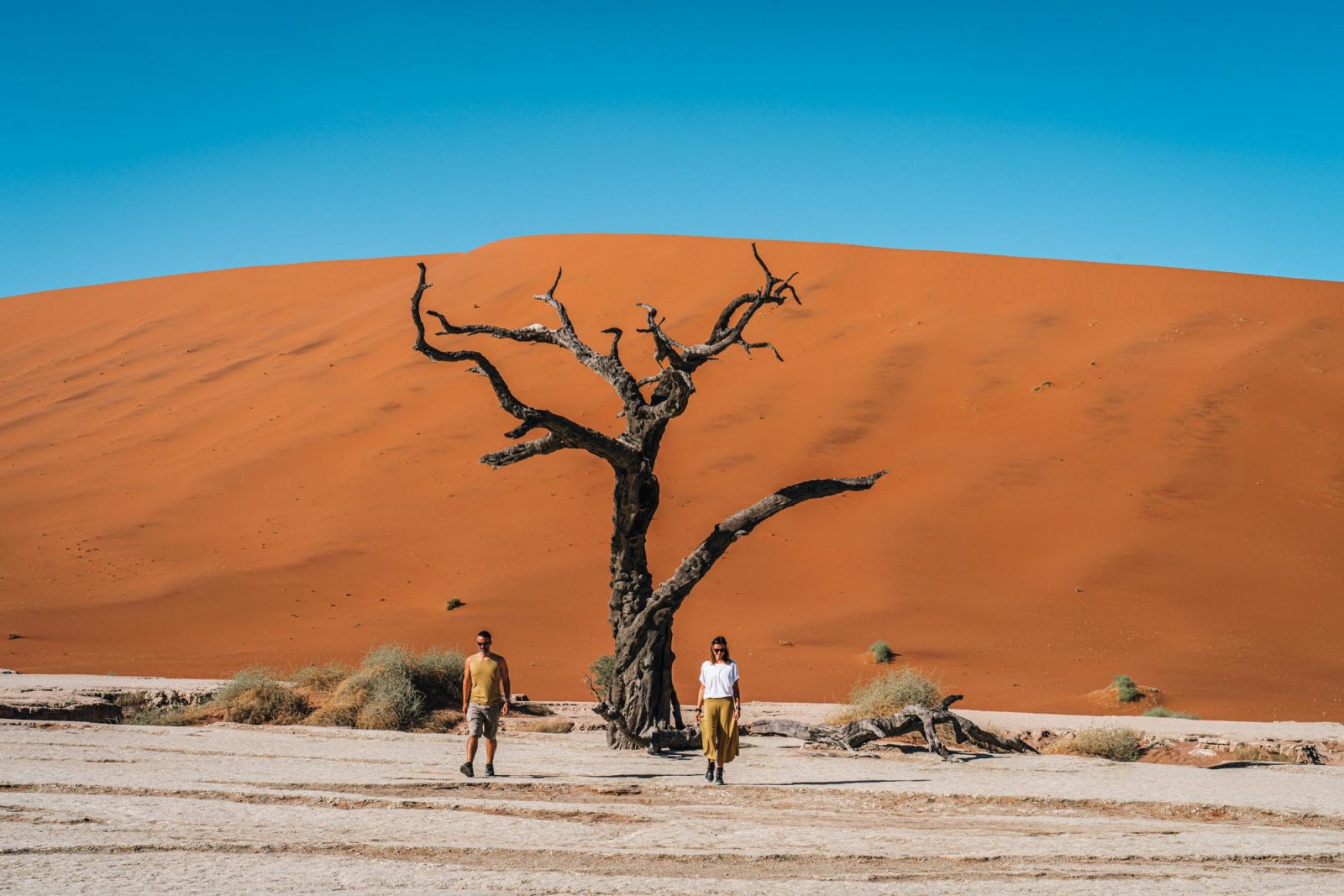
Namibia is one of the best countries for a first timer’s visit to Africa. Also, it’s one of the safest with decent tourist infrastructure and plenty of activities and national parks to explore. It might not stand out in Africa as the best for safaris, but its variety across many different aspects makes it a good all-round holiday destination.

